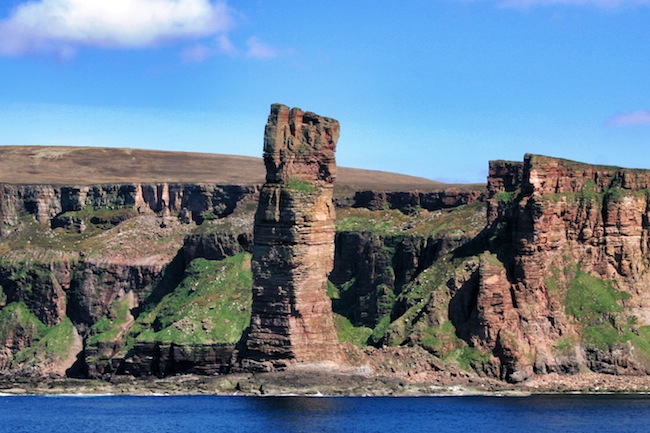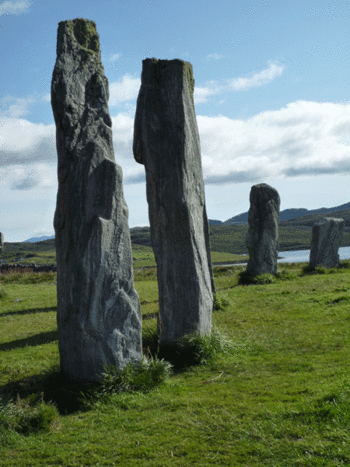Join Ellen Barone on a Scottish adventure. From the ancient charm of Edinburgh to the coastal haven of Charlestown, her journey unfolds tales of warmth, unexpected friendships, and the timeless allure of Scotland. This is more than a travelogue; it's a love affair with a place that becomes a cherished second home.
All tagged Scotland
People Watching Abroad: A Story of Parents and Teens
No matter where in the world writer Bobbi Lerman travels, she has only to give herself time to sit and watch to find a story. During a trip to the Isle of Skye, it was an overheard conversation between an errant Scottish teen and her father that served as the inspiration behind this delightfully universal tale of parental love and aggravation.
Music, Girlfriends, Facebook, and Medellin
Ellen Barone had almost written off social media when a Facebook private message from a long lost Scottish friend flashed across her iPhone display in Medellin, Colombia. Seconds later the two were live chatting across continents, sparking powerful memories infused with laughter and music and a shared New Mexico road trip.
If Only The Teachers Could See Me Now
I had to step back a few feet to get a glance of the Scott Monument from the ground up to the spire. It was terrifying and made me rather dizzy. (It reminded me of the time back in junior high when I froze at the top of a five-tier bleacher and it took a couple of teachers at least an hour to get me down.)
I was in my last full day of strolling around the streets of Edinburgh, taking in the remaining major attractions I wanted to see before leaving. For several days since my arrival, I had walked past the awe-inspiring gothic tribute to the famous Scottish author Sir Walter Scott. Located in the Princes Street Gardens, the monument, a cathedral-like structure, towers well above the other buildings on Princes Street and the surrounding area. This stunning piece of art, made from Binny sandstone, stands two hundred feet six inches tall, with a spiral staircase of 287 steps.
by Frank Demain
I was very excited to discover that one branch of my family had its roots in the Orkney Islands, a handful of miles off the north coast of Scotland. It seems that my great grandfather was a master mariner, no less. As I had already acquired a taste for that magnificent Orkney malt whisky, Highland Park, it was not too big a step to decide that a trip to the Orkneys was required to investigate further my Orcadian roots and to visit the distillery just outside Kirkwall. My wife, essentially a gin-and-tonic drinker, does admit to liking the occasional wee dram and so it was not too difficult to persuade her to join me on my voyage of genealogical and sensory discovery.
Fortunately – and unusually for that part of the world - the sea was calm as we crossed on the ferry from Scrabster, a few miles west of John o’ Groats, the northernmost point on the Scottish mainland, towards the port of Stromness on the largest of the Orkney islands, confusingly called Mainland. Because of the flatness of the sea we were able to pass close to the Old Man of Hoy, a magnificent 449 feet red sandstone sea stack, perched on a plinth of basalt. From the sea it looks truly formidable and, despite its closeness to civilisation, it was not until 1966 that it was first climbed, by a team led by the famous British mountaineer Chris Bonnington. There and then I decided that my visit would have to include a trip to view the stack from the bottom on the landward side.
 Old Man of Hoy sea stack, Orkney Islands, Scotland.
Old Man of Hoy sea stack, Orkney Islands, Scotland.
We enjoyed the warm, friendly welcome at the Highland Park distillery, and we had the joy of sampling rather older, finer bottlings than those to which our wallets normally extend. Smooth, peaty, rich, warming.
A visit to the helpful people at the Orkney Family History Society, housed in the handsome Orkney Library in Kirkwall, provided some useful information. However, my ancestral investigations proved a little less definitive than I had hoped. Even now I have been unable to discover the origins of the elusive Betsy Birnie, maternal grandmother of my captain, Walter Weir Wilson. And sadly, I found that grannie’s highland home no longer exists on the narrow coastal plain on the east side of the island of Hoy.
Fear and Longing in Scotlan
When I was twenty I got on a plane and went to Edinburgh, Scotland, to live for a year. It was 1978 and I had just graduated from college and was headed to Scotland because I had won a fellowship from a foundation that wrote me a check for $6,000 and said have a good time. I had to do a project outside the United States and I chose one in Scotland because it seemed more exotic than England and yet they still spoke English. Kind of.
words + photos by Elyn Aviva
It was a light and stormy night in late June, 2006, the second light and stormy night since we had arrived at the edge of nowhere. We had traveled for days to reach the Isle of Lewis, most northern isle of the Scottish Western Isles, to witness a rare astronomical event called the Lunar Standstill. Raw and rough, the wind felt as if it had blown in from around the world—and it had, for there was nothing in the Atlantic to slow it down.
 We had journeyed by bus and ferry and car to stand before the Standing Stones of Calanais (aka Callanish), to participate in the once-every-18.61 years Lunar Standstill. The pale sun would set around 11 pm, and then the full moon would skim the southern horizon, go behind Sleeping Beauty Hill, and come out again—giving the appearance of a double rising—and shine between two tall stones in the central stone ring. Archeo-astronomers believe this marking of the movements of the moon gave the builders important power 5000 years ago.
We had journeyed by bus and ferry and car to stand before the Standing Stones of Calanais (aka Callanish), to participate in the once-every-18.61 years Lunar Standstill. The pale sun would set around 11 pm, and then the full moon would skim the southern horizon, go behind Sleeping Beauty Hill, and come out again—giving the appearance of a double rising—and shine between two tall stones in the central stone ring. Archeo-astronomers believe this marking of the movements of the moon gave the builders important power 5000 years ago.
Calanais consists of a slightly squashed central ring, four radiating stone arms, and an underground, box-shaped cairn. The central megaliths stand 8-12 feet high, their uneven silhouettes resembling a Rorscharch test. Was it a temple? A cemetery? A community center? A calendar? Nobody knows for sure. The silent stones reveal their purpose slowly, if at all.
We couldn’t wait to see the Lunar Standstill, but wait we had to. The night before, icy rain had ruined our chances. We hoped for better the second night, but the moon had coyly disappeared behind a layer of clouds, only occasionally peeking out. The event was taking place right before our eyes, but we couldn’t see it.
We had been drawn to this desolate distant land because we wanted to experience what the ancients had experienced (whatever that might have been) millennia ago. We were not alone in that desire. Shivering dreadlocked tie-dyed youth chanted and drummed to the moon, equally determined to have an experience. Nor were we and they the only watchers on that wild and windy night. A choir of Church of Scotland youth clung together, courageously singing “Amazing Grace” against the encroaching pagan forces. As if intimidated by such competing claims, the moon scuddled behind another back-lit cloud and stayed there.
At the end of the stone-lined path that led north from the ring of monoliths, a group of blanket-wrapped elders sat on chairs, impatient with those who blocked their view back down the aisle. Oblivious to their muttered complaints, a photographer set up his tripod in front of them. He pointed his camera toward Sleeping Beauty, waiting for a momentary glimpse of the moon gleaming between two grey and glistening stones. They looked like giant fingers pointing at the sky.




